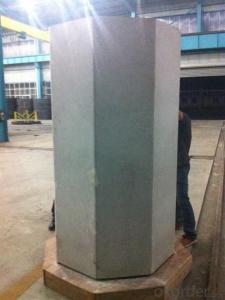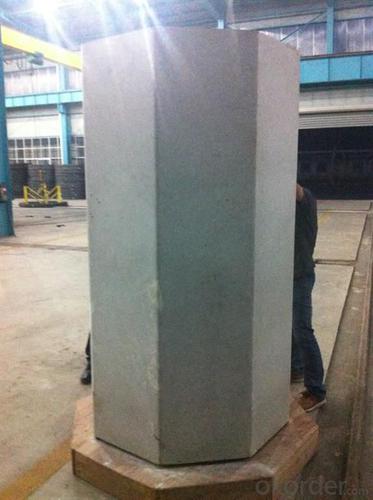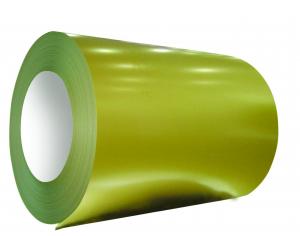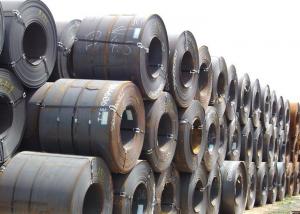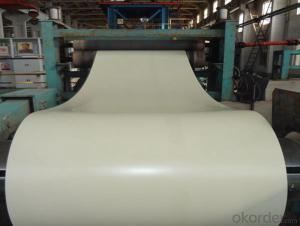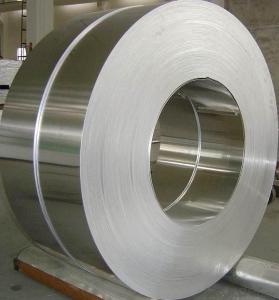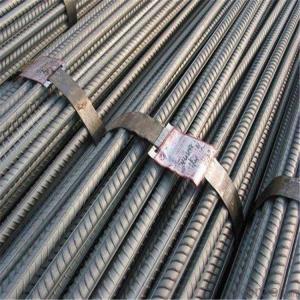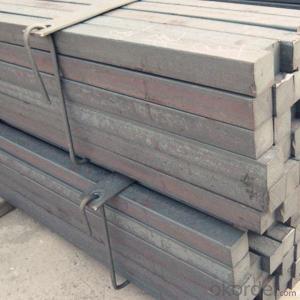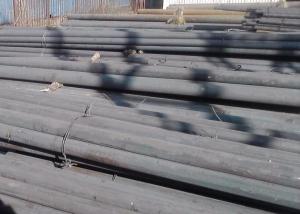Octagonal Pile
- Loading Port:
- China Main Port
- Payment Terms:
- TT OR LC
- Min Order Qty:
- -
- Supply Capability:
- -
OKorder Service Pledge
Quality Product, Order Online Tracking, Timely Delivery
OKorder Financial Service
Credit Rating, Credit Services, Credit Purchasing
You Might Also Like
We mainly engaged in manufacturing PHC concrete piles with diameters of Φ600~Φ1400 for wharf. Every year, the company produces various types of concrete piles of over 150,000 meters with single-section pile of 41meter long and annual gross output value up to RMB 600 million.
With years’ manufacturing experience of concrete piles and a great number of excellent technological and management talents, the company persists in technical innovation and research of new products. The large-diameter PHC concrete piles with merits such as good bending strength, large bearing capacity, fine resistance against the external force and so forth have been the preferential choice of structural materials for foundation engineering construction such as large ports, wharfs, shipyard, huge bridges, high-rise buildings, heavy factories, high-speed railway, etc.
The company holds the operation philosophy of “honest, practical and harmonious for win-win” and persists in the quality guideline of “constant improvement with prohibition of non-conforming products into construction site” to provide you sincerely with superior products and service.
- Q: How do you restore the shine on a stainless steel sheet?
- Achieving a polished appearance for a stainless steel sheet can be accomplished by following a few uncomplicated steps. Initially, it is crucial to ensure the cleanliness of the surface by employing a soft cloth or sponge, as well as a mild detergent mixed with warm water, to wipe away any dirt or debris. Subsequently, the soap residue should be rinsed off and the sheet thoroughly dried. Following this, a minute amount of stainless steel cleaner or polish should be applied to a clean, soft cloth. In a circular motion, gently rub the cleaner onto the stainless steel sheet, paying particular attention to areas that exhibit visible marks or dullness. It is important to adhere to the instructions provided by the manufacturer for the specific cleaner or polish being utilized. After the cleaner has been applied, allow it to remain on the surface for several minutes, permitting it to work its magic. Then, utilizing a fresh section of the cloth, buff the stainless steel sheet by employing circular motions until the shine begins to manifest. This process should be continued until satisfaction with the results is achieved. If a specialized stainless steel cleaner or polish is not available, household items can also be utilized to restore the shine. For instance, a paste can be formed by combining baking soda and water, which can then be applied to the sheet. Gently rub the paste onto the surface using a soft cloth and rinse it off thoroughly. Furthermore, vinegar or lemon juice can be employed to eliminate stains or spots. Applying a small quantity of vinegar or lemon juice to a cloth and rubbing it onto the stainless steel sheet, followed by rinsing and thorough drying, can effectively remove such blemishes. It is imperative to always test any cleaning method or product on a small, inconspicuous area of the stainless steel sheet before employing it on the entire surface. This will ensure that no damage or discoloration occurs.
- Q: How does tinplate perform in terms of lightness and portability?
- Tinplate performs exceptionally well in terms of lightness and portability. It is a lightweight material that allows for easy handling and transportation, making it highly suitable for various applications requiring mobility.
- Q: Can steel strips be used in marine applications?
- Yes, steel strips can be used in marine applications. Steel is a durable and corrosion-resistant material, making it suitable for various marine environments. Steel strips can be used in shipbuilding, offshore structures, and marine equipment where strength and reliability are required.
- Q: How are steel strips processed for formability?
- Steel strips are processed for formability through a series of manufacturing techniques that aim to enhance their ability to be shaped and formed into different products. These processes include annealing, tempering, and cold rolling. Annealing is the first step in improving the formability of steel strips. It involves heating the strips to a specific temperature and then slowly cooling them down. This process relieves internal stresses and makes the steel more malleable, allowing it to be bent or formed without cracking or breaking. Tempering is another important process that enhances the formability of steel strips. After annealing, the strips are reheated to a lower temperature and then quickly cooled. This process further increases the ductility and toughness of the steel, making it more resistant to cracking during forming operations. Cold rolling is the final step in processing steel strips for formability. This process involves passing the strips through a series of rollers at room temperature, which reduces their thickness and improves their surface finish. Cold rolling not only increases the formability of the steel but also enhances its mechanical properties, such as strength and hardness. In addition to these primary processes, other secondary techniques can be employed to further enhance the formability of steel strips. These may include surface treatments, such as applying lubricants or coatings, to reduce friction and improve the material's ability to slide and deform during forming operations. Overall, the processing of steel strips for formability is a carefully orchestrated series of manufacturing techniques that aim to improve the material's ability to be shaped and formed into desired products. Through annealing, tempering, cold rolling, and other secondary processes, steel strips become more malleable, ductile, and resistant to cracking, allowing for efficient and successful forming operations.
- Q: What is the standard size of a steel rebar?
- The size of a steel rebar can vary depending on the particular application and project requirements. In construction and civil engineering, the standard sizes for steel rebars commonly used are typically 10mm, 12mm, 16mm, 20mm, 25mm, and 32mm in diameter. These sizes are widely accessible and utilized in different structural elements like beams, columns, and slabs. Furthermore, the length of a steel rebar can vary, usually ranging from 6 meters to 12 meters, depending on the project specifications. To determine the appropriate size of steel rebar for a specific construction project, it is crucial to consult the project engineer or refer to the relevant building codes and standards.
- Q: What are the different grades of stainless steel flat?
- There are several different grades of stainless steel flat, including 304, 316, 430, and 201. Each grade has its own unique composition and properties, making them suitable for various applications.
- Q: Can steel rebars be used in structures with high resistance to UV radiation?
- No, steel rebars cannot be used in structures with high resistance to UV radiation as steel is susceptible to corrosion when exposed to UV radiation for extended periods of time.
- Q: Can stainless steel pipes be insulated with polyurethane?
- Yes, stainless steel pipes can be insulated with polyurethane. Polyurethane insulation is commonly used for both thermal and acoustic insulation in various industries, including plumbing and HVAC systems. It offers excellent thermal conductivity properties and low moisture absorption, making it an ideal choice for insulating stainless steel pipes. Polyurethane insulation can be applied as a foam or in the form of pre-insulated pipe sections. It provides effective insulation by reducing heat loss or gain, preventing condensation, and improving energy efficiency. Additionally, polyurethane insulation is durable, lightweight, and resistant to corrosion, making it a suitable choice for insulating stainless steel pipes in various applications.
- Q: What are the dimensions and sizes of stainless steel pipes?
- Stainless steel pipes come in various dimensions and sizes to cater to different industrial and commercial applications. The dimensions and sizes of stainless steel pipes are determined by their nominal diameter (DN) and their schedule or wall thickness. The nominal diameter refers to the approximate internal diameter of the pipe, and it is commonly expressed in inches or millimeters. The most commonly available stainless steel pipe sizes range from 1/8 inch (3.175 mm) up to 48 inches (1219 mm) in nominal diameter. However, larger sizes can be custom-made to meet specific requirements. The schedule or wall thickness of stainless steel pipes is denoted by a schedule number, which indicates the thickness of the pipe's walls. The most common schedules for stainless steel pipes are Sch 5, Sch 10, Sch 40, and Sch 80. The higher the schedule number, the thicker the walls of the pipe. In addition to the dimensions and sizes, stainless steel pipes are also available in various lengths, typically ranging from 20 feet (6.1 meters) to 40 feet (12.2 meters). However, custom lengths can also be ordered based on specific project needs. It is worth noting that these dimensions and sizes may vary depending on the standards and specifications set by different countries and industries. Therefore, it is essential to consult the relevant standards or work with a trusted supplier to ensure the accurate dimensions and sizes of stainless steel pipes for a particular application.
- Q: What are the different methods for cutting steel rebars on-site?
- Cutting steel rebars on-site can be achieved using various methods, which depend on the specific project requirements and limitations. The following are some commonly used techniques: 1. For smaller projects or areas where power tools are inaccessible, manual cutting proves to be a suitable method. Handheld manual tools like rebar cutters or bolt cutters are utilized to cut through the steel rebars. 2. Abrasive cutting, also known as grinding or cut-off saws, employs a high-speed rotating disc with abrasive particles that grind through the steel rebars. This method is effective for cutting rebars of different sizes and is frequently employed on construction sites. 3. Torch cutting involves the use of oxy-fuel or plasma torches. The method entails heating the steel rebars to a high temperature and then cutting through them using the intense heat. Torch cutting is ideal for thicker and larger rebars, although caution and safety measures must be observed due to the open flame involved. 4. Shear cutting utilizes hydraulic or mechanical shears to cut through the steel rebars. It is an efficient method for quickly and accurately cutting rebars, particularly for larger projects. 5. Hydraulic cutting involves the use of hydraulic pumps to generate high pressure, which is then utilized to power the cutting blade. This method is commonly employed for heavy-duty cutting tasks and can easily cut through thick rebars. 6. Electric cutting is achieved using electric cutters, such as electric rebar cutters or portable band saws. These tools are powered by electricity and provide a clean and precise cut. They are commonly utilized on construction sites where power is readily available. When selecting the appropriate method for cutting steel rebars on-site, it is crucial to consider the specific project requirements, including the size and thickness of the rebars, available power sources, and safety considerations.
Send your message to us
Octagonal Pile
- Loading Port:
- China Main Port
- Payment Terms:
- TT OR LC
- Min Order Qty:
- -
- Supply Capability:
- -
OKorder Service Pledge
Quality Product, Order Online Tracking, Timely Delivery
OKorder Financial Service
Credit Rating, Credit Services, Credit Purchasing
Similar products
Hot products
Hot Searches
Related keywords
